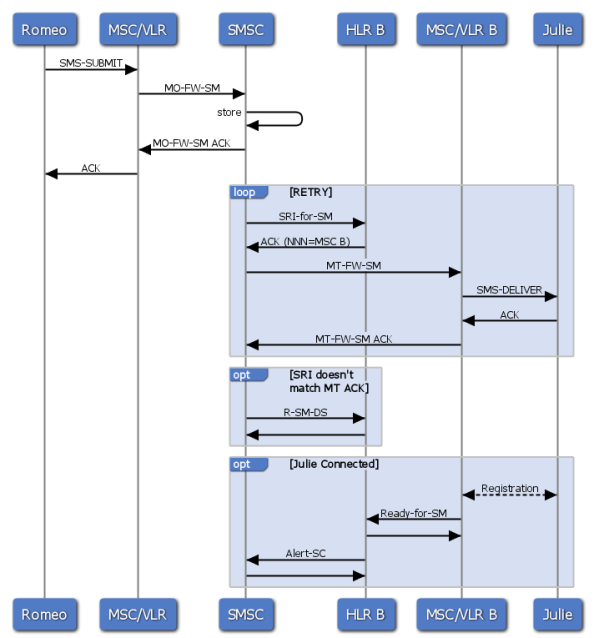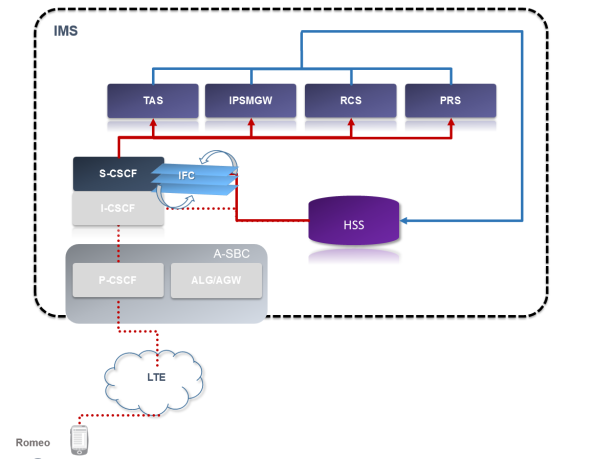I know, I know – this is not really the Rich communication related stuff. However it is good to understand the roots of Instant messaging in 4G network. For us it is also important because of the IP-SM-GW Transport Level Interworking.
Originally the core network elements supported services. SMS service was one of them and very important one. The application server is called SMSC.
The main functionality of SMSC is to “Store-and-forward”. Basically the SMSC receives an SMS (MO-FWSM), stores it and acknowledges it back. Then it tries to deliver it. For that it needs to receive the routing information from HLR. If the delivery is not successful the message is scheduled for a retry.
The routing of MT message is done based on the information received from HLR. So firstly based on the message prefix we will route Send-Routing-Information-request (SRI-req) to a responsible HLR. HLR takes a look in its tables and finds out what MSC is currently handling the recipient. The address (Global Title) is returned as Network-Node-Number (NNN). It is possible to return both MSC and SGSN address and the preference how to deliver the message.

SMSC flow
There some more operations as AlertSC and RMDS which have to be supported. Alert-Service-Centre message is used to trigger the SMSC to deliver messages of previously Absent Subscribers. Report-SM-Delivery-Status is sent by SMSC to update the information about subscriber in HLR. Anyway both the architecture and the massage flows are much simpler than in case of IMS.

SMS Flow
Homerouting
In IMS we are used to apply services for both – originator and recipient. When we look at the original SMSC flow, we see that we can apply the services only for the originator. Around 2006 mobile operators realized that they are loosing a big money and came a concept of homerouting. (Actually technically it was present for a few years already as so called Foreign Subscriber Gateway – FSG.)
The idea was simple. Instead of direct delivery to the recipient’s MSC, the SMSC of the originator (SMSC-A) will forward the message to the recipient’s SMSC (SMSC-B). SMSC-B will apply the services for the recipient and will try to deliver the Short Message.
This should be done in a transactional mode and the SMSC-A is still responsible for the retries. That’s because the SMSC-A needs to know the delivery result. Hence it can generate the notification ‘delivered/deleted’.
Note, that the SMSC-B acts – from the SMSC-A point of view – as both, HLR and MSC. That means that the GT of SMSC-B has to be preconfigured for SRIs on the SMSC-A.
Btw. The homerouting can introduce very nice loops in the network (which some operators intentionally misused ;)).
Not all the operators use this call flow. Also mainly in the North America mobile operators prefer SMPP protocol instead of Sigtran in case of transfer between networks (SMSC-A to SMSC-B).
In the 4G of networks we reuse the homerouting scenario and the role of SMSC-B is played by IP-SM-GW.
Related posts:




